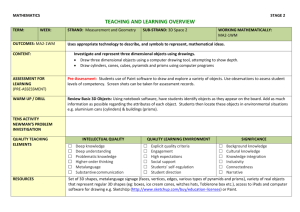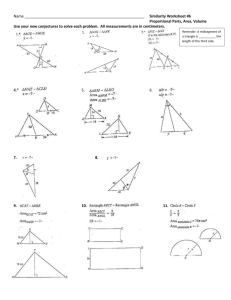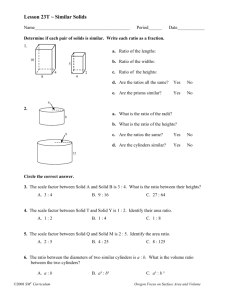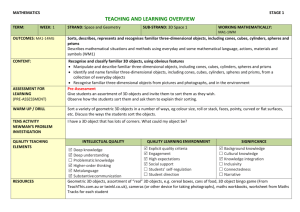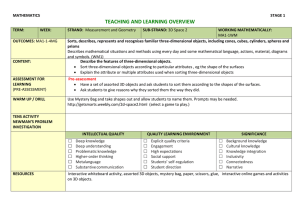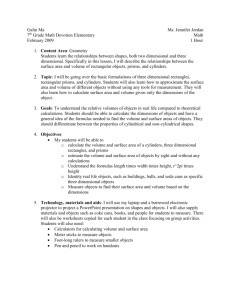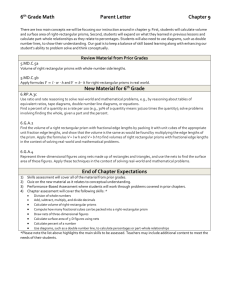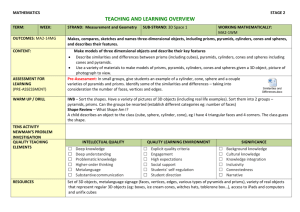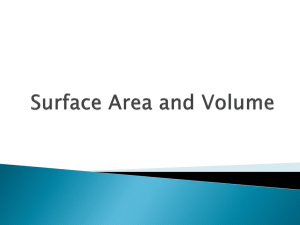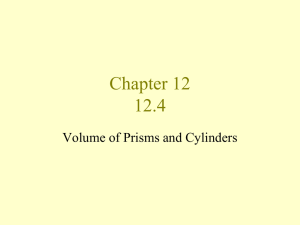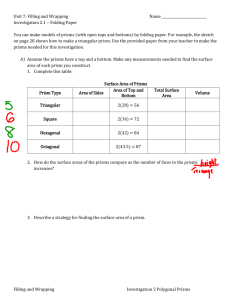Unit 12: Surface area and volume of 3D shapes
advertisement
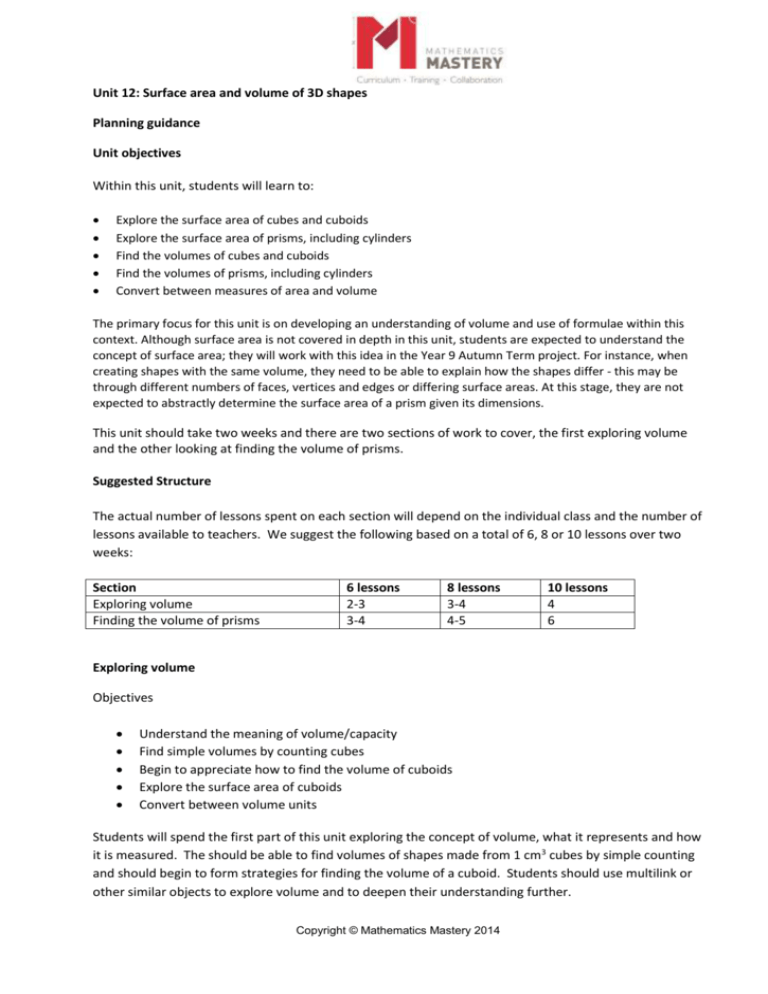
Unit 12: Surface area and volume of 3D shapes Planning guidance Unit objectives Within this unit, students will learn to: Explore the surface area of cubes and cuboids Explore the surface area of prisms, including cylinders Find the volumes of cubes and cuboids Find the volumes of prisms, including cylinders Convert between measures of area and volume The primary focus for this unit is on developing an understanding of volume and use of formulae within this context. Although surface area is not covered in depth in this unit, students are expected to understand the concept of surface area; they will work with this idea in the Year 9 Autumn Term project. For instance, when creating shapes with the same volume, they need to be able to explain how the shapes differ - this may be through different numbers of faces, vertices and edges or differing surface areas. At this stage, they are not expected to abstractly determine the surface area of a prism given its dimensions. This unit should take two weeks and there are two sections of work to cover, the first exploring volume and the other looking at finding the volume of prisms. Suggested Structure The actual number of lessons spent on each section will depend on the individual class and the number of lessons available to teachers. We suggest the following based on a total of 6, 8 or 10 lessons over two weeks: Section Exploring volume Finding the volume of prisms 6 lessons 2-3 3-4 8 lessons 3-4 4-5 10 lessons 4 6 Exploring volume Objectives Understand the meaning of volume/capacity Find simple volumes by counting cubes Begin to appreciate how to find the volume of cuboids Explore the surface area of cuboids Convert between volume units Students will spend the first part of this unit exploring the concept of volume, what it represents and how it is measured. The should be able to find volumes of shapes made from 1 cm3 cubes by simple counting and should begin to form strategies for finding the volume of a cuboid. Students should use multilink or other similar objects to explore volume and to deepen their understanding further. Copyright © Mathematics Mastery 2014 Surface area is not explicitly covered but should be discussed and explored since it involves revising areas of rectangles and squares. Unit conversions have been met earlier and can now be extended to volume. As before, students need to gain a conceptual understanding through concrete and pictorial representations rather than learning conversion rates. Dienes blocks are useful as students can compare ones with a thousand block for volume comparison. For further guidance, including the Department Tasks for this section, click Exploring volume on the Planning resources on the main page for this unit. Volume of a prism Objectives: Explore and find the volume of prisms including cylinders Find the volume of compound 3D shapes Solve more complex problems involving volume Solve problems involving surface area and volume Explore dimensions (optional) In this section students look at finding the volume of prisms, including cylinders. There is a lot of opportunity here to challenge students and to consolidate work on a number of other units such as similarity, percentages and ratio. Many of these tasks would work well as group tasks allowing students to draw on earlier mathematics and to develop their problem solving skills. We do not provide any formulae in the slides since the aim is for students to develop their understanding that a prism is made up of identical layers and to find the volume we find the volume of one layer and multiply by the height/length/depth depending on the shape’s orientation. It is important that this is demonstrated either concretely or through pictorial representations (e.g. on the IWB) since some students find it difficult to go from the 2D area of a face to 3D volume. Again, surface area is not explicitly taught, but is included in many of the problems so that students can be using their knowledge of finding areas throughout the unit. For further guidance, including the Department Tasks for this section, click Finding the volume of prisms under Planning resources on the main page for this unit. Copyright © Mathematics Mastery 2014
